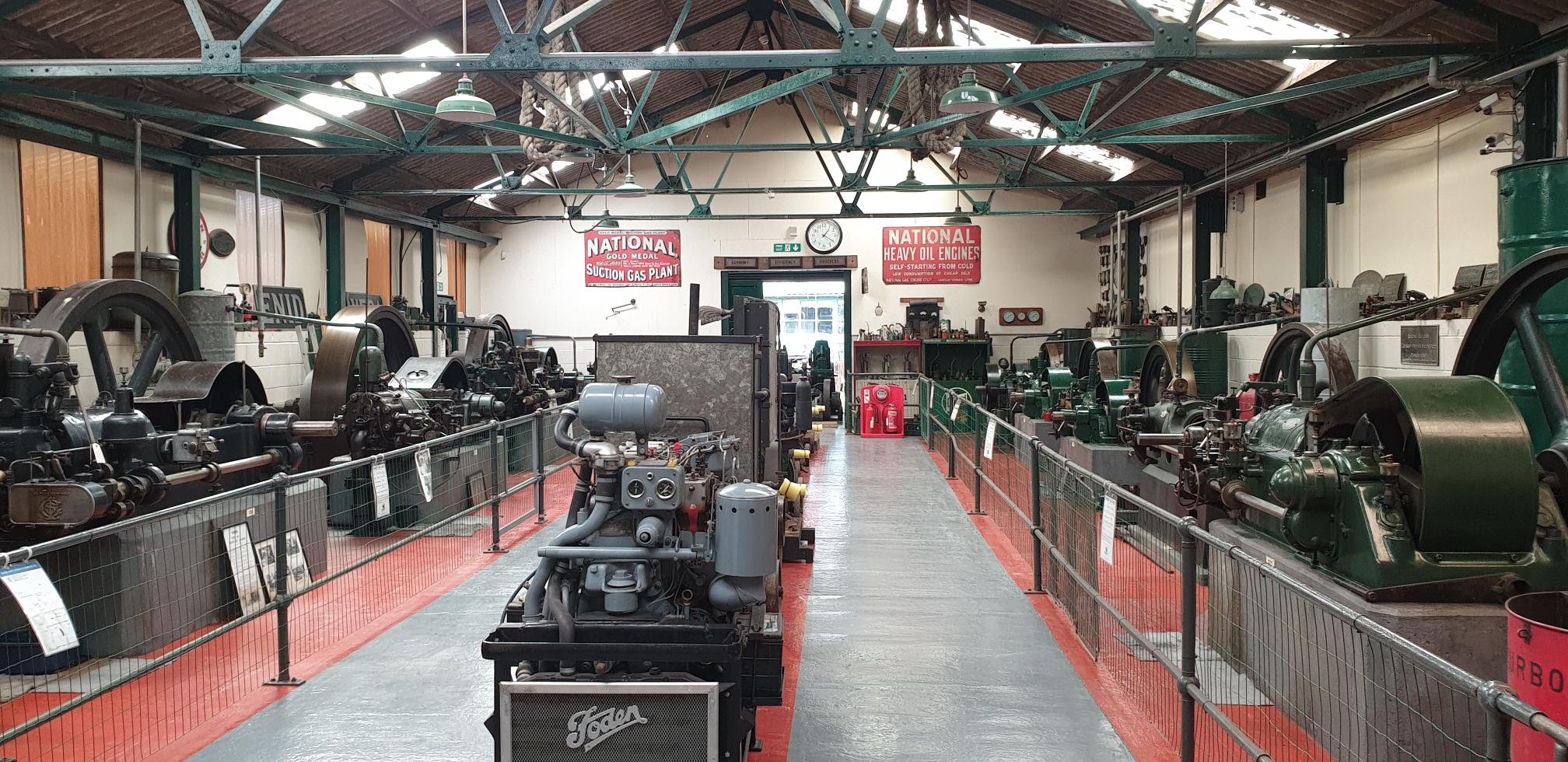
The emergence of the oil engine
Away from Vulcan, in 1892, Herbert Akroyd Stuart, who was born in Halifax on 28th January 1864, marketed the world's first successful oil engine. His father, Charles Stuart, was a Scotsman from Paisley; who had established the Bletchley Iron and Tin Plate Works, in the county of Buckinghamshire. After working for a short time as junior assistant in the Mechanical Engineering Department of the City and Guilds of London Technical College, Finsbury, Herbert joined his father at Bletchley and commenced work experimenting with oil engines.
Herbert’s first patent was taken out in 1866 after four years of experimenting ~ largely based on the ‘trial and error’ method of development. Other patents followed, jointly taken out with Charles Richard Binney. Their most important patent was taken out in May 1890 and describes the world’s first compression ignition engine. The system described is known as solid injection; it is the principle that is used by most present day diesel engines and was a proven technique when Rudolph Diesel presented his designs for a patent in 1893.
Several experimental engines were built at the Bletchley factory, one of which was installed at the newspaper offices of the Fenny Stratford Times another went to the waterworks and a third to the brush factory of Messrs. Cooks. As the quality of the engineering on these engines was poor, George Wailes & Co, Euston Road, London built a subsequent batch of four. Unfortunately there are no known survivors of these early engines.
By 1891, Akroyd-Stuart realised that the engine was ready for quantity production and Richard Hornsby & Son, at Grantham, was offered the manufacturing rights to develop and market the Hornsby-Akroyd engine. Two of the Akroyd designed engines were subsequently exhibited by Hornsbys at the Royal Agricultural Show, held at Doncaster in June 1891.
In May 1892 the first production engines, No’s 101 and 102, were installed at the Great Brickhill Waterworks, at Fenny Stratford. The engines worked regularly until 1923, when a Mr. Evans, a timber merchant in Bletchley, purchased No. 101. In 1939 the engine was returned to Hornsby’s where it was restored and preserved as a museum piece. Today it is displayed in the works of MAN B&W Diesel Ltd, Ruston, at Newton-le-Willows, Merseyside.
The Hornsby-Akroyd was an instant success and a total of 32,417 engines of this type were built. Its uses were numerous, and they were produced in both horizontal and vertical form, stationary and portable. In 1896 this type of engine was used to power the first oil tractor and the first oil locomotive; and in 1905, a 20 h.p. Hornsby-Akroyd engined tractor was the worlds first 'caterpillar' tractor.
In 1892 Ruston, Burton and Proctor changed its name to Ruston, Proctor and Co Ltd and by the year 1894 they too had produced their first commercial oil engine.
Richard Hornsby & Son built a vee-form diesel engine in 1903 ~ this was the earliest vee-form to be built. In 1904 the Vulcan design for a four cylinder ‘Atlantic’ type balanced compound engine was accepted by the Great Northern Railway.
It was at the English Electric Company’s works in Rugby, in 1906, that the first order for diesel engines was received. These single crank ‘A’ frame type engines, of 130 b.h.p., were the forerunner of the ‘K’ series of engines. The rugby works had been opened in 1897, and as this was the year Queen Victoria celebrated her Diamond Jubilee, they were aptly named the 'Victoria Works' of Willians and Robinson Ltd.
In 1912 Ruston, Proctor & Co. Ltd. developed a fuel injector that was to become the basis of the fuel injector that is still in use today. During the First World War this Company built almost 3,000 single seater fighters thus making them the third largest aircraft producer. They also produced over 500 'caterpillar' tractors for hauling guns during the period 1915 to 1918.
During 1918, the English Electric Works were formed at Rugby by the amalgamation of Willans and Robinson with several other old-established engineering and in the same year Ruston acquired the firm of Richard Hornsby and Son.
Willans and Robinson obtained a licence for the manufacture of the Fullgar opposed-piston engine in 1920. These engines were to prove highly popular for stationary land use and remained in production for over thirty years.
Next chapter: Vulcan products 1914 to 1918


